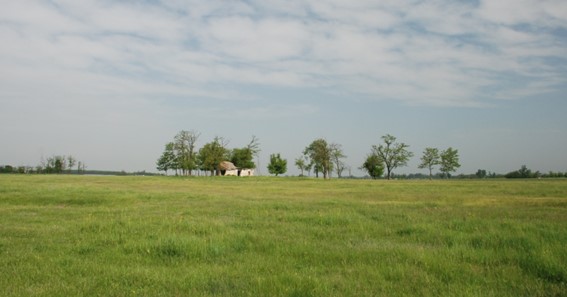Are you curious to know what is fallow land? You have come to the right place as I am going to tell you everything about fallow land in a very simple explanation. Without further discussion let’s begin to know what is fallow land?
In the realm of agriculture and land management, the concept of fallow land holds significant importance. Fallow land refers to agricultural land that is intentionally left uncultivated or unplanted for a certain period. In this blog post, we will explore the concept of fallow land, its purpose, benefits, and sustainable practices associated with its management.
What Is Fallow Land?
Fallow land is characterized by the deliberate absence of crops or cultivation activities for a specific duration. It is an integral part of traditional farming practices and land management strategies employed by farmers and landowners worldwide. The duration of the fallow period can vary, ranging from a few months to several years, depending on factors such as soil fertility restoration, crop rotation, and environmental considerations.
Benefits Of Fallow Land:
-
Soil Restoration:
One of the primary benefits of fallow land is soil restoration. Continuous cultivation and crop production can deplete soil nutrients and lead to soil erosion. Allowing land to lie fallow helps replenish soil fertility, restore nutrient levels, and improve soil structure. It allows natural processes to take place, such as microbial activity, organic matter decomposition, and nutrient cycling, leading to healthier and more productive soil.
-
Weed and Pest Control:
Fallow land can contribute to weed and pest control. By interrupting the life cycles of certain weeds and pests, fallowing helps reduce their populations naturally. It minimizes the need for chemical interventions, promoting a more environmentally friendly approach to agriculture.
-
Water Conservation:
Fallow land can play a role in water conservation. During fallow periods, water consumption by crops is significantly reduced, allowing the land to retain moisture and recharge groundwater reserves. This is particularly crucial in regions facing water scarcity or where sustainable water management practices are necessary.
-
Biodiversity Promotion:
Fallow land provides an opportunity for the growth and diversification of natural vegetation. The absence of cultivated crops allows native plants, wildflowers, and beneficial wildlife habitats to flourish. This promotes biodiversity and supports pollinators, beneficial insects, and other wildlife, contributing to ecosystem health and resilience.
Sustainable Practices For Fallow Land:
-
Crop Rotation:
Implementing crop rotation practices can involve the inclusion of fallow periods in a farming system. By rotating crops and incorporating fallow periods, farmers can optimize soil health, reduce pest and disease pressures, and improve overall crop productivity.
-
Green Manure Cover Crops:
During fallow periods, planting green manure cover crops can provide additional benefits. These cover crops, such as legumes or grasses, are grown primarily to enhance soil fertility, prevent soil erosion, and suppress weed growth. They are subsequently incorporated into the soil to enrich organic matter content.
-
Agroforestry:
In some cases, fallow land can be utilized for agroforestry practices. Planting trees or establishing mixed cropping systems involving trees, shrubs, and crops can utilize fallow land effectively. This approach provides multiple benefits, including improved soil quality, diversified farm products, and enhanced carbon sequestration.
Conclusion:
Fallow land plays a crucial role in sustainable agriculture and land management practices. By allowing agricultural land to rest and regenerate, fallowing contributes to soil restoration, weed and pest control, water conservation, and biodiversity promotion. Adopting sustainable practices such as crop rotation, green manure cover crops, and agroforestry can further enhance the benefits associated with fallow land. By recognizing the significance of fallow land and integrating it into farming systems, we can cultivate a more resilient, productive, and environmentally conscious approach to agriculture.
FAQ
What Is Fallow Land Class 10th?
Fallow land refers to bare land in which crops are not cultivated for five years or more.
What Is Meant By Fallow Land?
Fallow land is all arable land either included in the crop rotation system or maintained in good agricultural and environmental condition (GAEC), whether worked or not, but which will not be harvested for the duration of a crop year.
What Is Called Fallow Land Class 8?
Fallow lands are agricultural lands, temporarily not in use. Farmers leave certain land for two or more years to increase its fertility.
What Is Fallow Land Class 9?
Fallow land is a piece of land that is normally used for farming but that is left with no crops on it for a season in order to let it recover its fertility.
I Have Covered All The Following Queries And Topics In The Above Article
What Is Fallow Land Class 10
What Is Current Fallow Land
About What Percentage Of Land Is Fallow In Maharashtra
What Is Called Fallow Land
What Is Fallow Land Class 8
What Is Current Fallow Land Class 10
What Is Fallow Land Class 10th
What Is Other Than Current Fallow Land
What Is Meant By Fallow Land
What Is A Fallow Land
What Is Fallow Land?
What Is The Fallow Land
What Is Fallow Land
What does fallow the land mean
What is current fallow land Class 10

